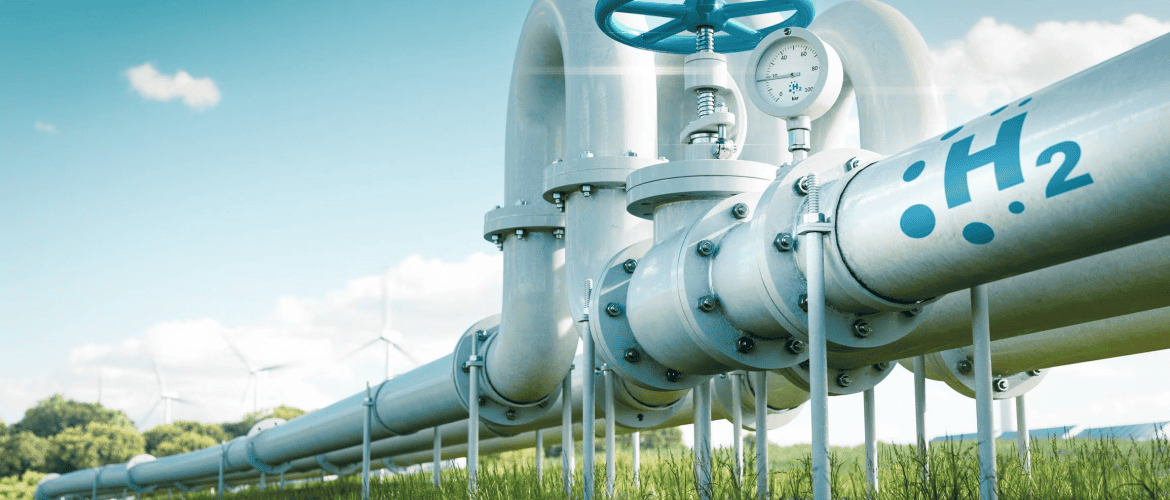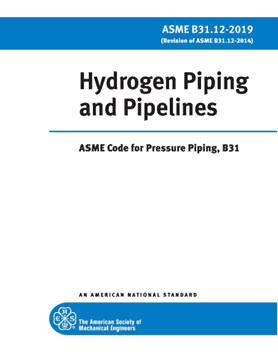ASME B31.12: A Comprehensive Guide to the Hydrogen Piping and Pipeline Systems Code
- Posted by: José Luis Lombardo
- Category: Piping

In the quest for a sustainable and decarbonized future, hydrogen is emerging as a key energy carrier with tremendous potential. As the demand for hydrogen increases, the need for safe and efficient infrastructure becomes paramount. The American Society of Mechanical Engineers (ASME) recognized this need and developed the ASME B31.12 code to provide guidelines for the design, construction, and operation of hydrogen piping and pipeline systems. This comprehensive code ensures the integrity and safety of hydrogen infrastructure while promoting the growth of the hydrogen industry. In this article, we will delve into the key aspects of the ASME B31.12 code and its significance in enabling the safe and reliable transportation of hydrogen.
Overview of ASME B31.12:
ASME B31.12 is a specific code within the broader ASME B31 series, which covers various piping systems such as oil, gas, and chemical pipelines. ASME B31.12 focuses exclusively on hydrogen piping and pipeline systems. Its primary purpose is to establish requirements for the design, fabrication, installation, inspection, testing, and maintenance of hydrogen piping systems and components.
Scope and Applicability:
The scope of ASME B31.12 encompasses both high-pressure gaseous hydrogen piping systems and liquid hydrogen piping systems. It applies to stationary hydrogen systems, including production, storage, distribution, and utilization facilities. The code covers a wide range of system components, including pipes, fittings, valves, pressure vessels, and associated equipment.
Design Considerations:
ASME B31.12 outlines various design considerations for hydrogen piping systems. These considerations include determining the design pressure, temperature, material selection, stress analysis, and safety factors. The code provides guidelines on calculating the required wall thickness, considering factors such as internal and external pressure, temperature, and corrosion allowances. It also addresses design aspects related to hydrogen-specific properties, such as embrittlement and permeation.
 Material Selection:
Material Selection:
Hydrogen presents unique challenges due to its properties, including its potential to cause embrittlement in certain materials. ASME B31.12 specifies the criteria for material selection to ensure compatibility and long-term integrity. The code identifies materials suitable for hydrogen service and provides guidelines for material testing, verification, and documentation.
Construction and Fabrication:
ASME B31.12 sets requirements for the construction and fabrication of hydrogen piping systems. It covers welding procedures, joint design, quality control, and inspection techniques. The code emphasizes the need for qualified personnel, proper welding techniques, and non-destructive examination methods to ensure the integrity of the system.
Inspection and Testing:
To ensure the safety and reliability of hydrogen piping systems, ASME B31.12 defines inspection and testing requirements. It includes guidelines for visual inspections, non-destructive examination techniques, pressure testing, and leak detection. The code emphasizes the importance of periodic inspections and maintenance to identify potential issues and ensure continued system integrity.
Safety Considerations:
Safety is a paramount concern in the design and operation of hydrogen infrastructure. ASME B31.12 addresses safety considerations associated with hydrogen, including fire and explosion hazards, leak detection, and emergency shutdown procedures. The code promotes the use of safety devices, such as pressure relief valves and hydrogen sensors, to mitigate risks and protect personnel and the environment.
Regulatory Compliance and Code Enforcement:
ASME B31.12 is widely recognized and adopted by regulatory authorities, ensuring compliance with industry standards and legal requirements. Compliance with the code is typically enforced through inspections and audits conducted by regulatory bodies. Adhering to the code not only ensures regulatory compliance but also demonstrates a commitment to safety and industry best practices.
Advantages and Impact:
The implementation of ASME B31.12 has several advantages and impacts on the hydrogen industry.
Firstly, it provides a standardized framework for the design and construction of hydrogen infrastructure, enabling consistency and interoperability. This promotes confidence among stakeholders and facilitates the growth of the hydrogen market.
Secondly, the code enhances safety by incorporating industry best practices and addressing the unique characteristics and hazards associated with hydrogen. By adhering to the code, organizations can mitigate risks, protect personnel, and ensure the integrity of their hydrogen systems.
Furthermore, ASME B31.12 contributes to the overall advancement of hydrogen technology by promoting research, development, and innovation. The code provides a foundation for collaboration among industry professionals, researchers, and regulators, facilitating sharing of knowledge and continuous improvement.
Conclusion:
ASME B31.12 plays a crucial role in shaping the future of hydrogen infrastructure. By providing guidelines for the design, construction, and operation of hydrogen piping and pipeline systems, the code ensures the safety, integrity, and reliability of these systems. Adherence to ASME B31.12 not only enables compliance with regulatory requirements but also fosters confidence, promotes interoperability, and accelerates the growth of the hydrogen industry. As the demand for hydrogen continues to rise, the importance of standards such as ASME B31.12 cannot be overstated in establishing a robust and sustainable hydrogen infrastructure.
For more information:



 WhatsApp
WhatsApp